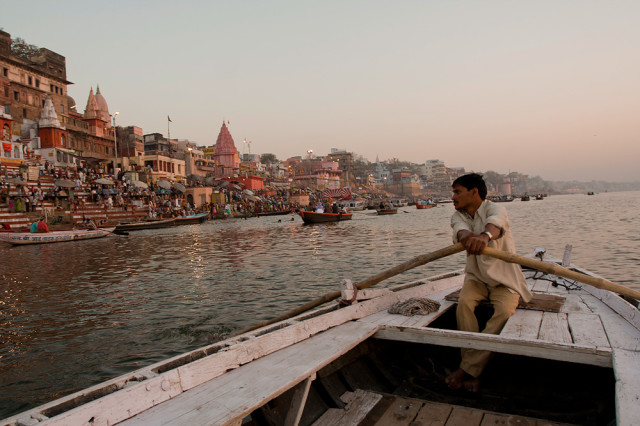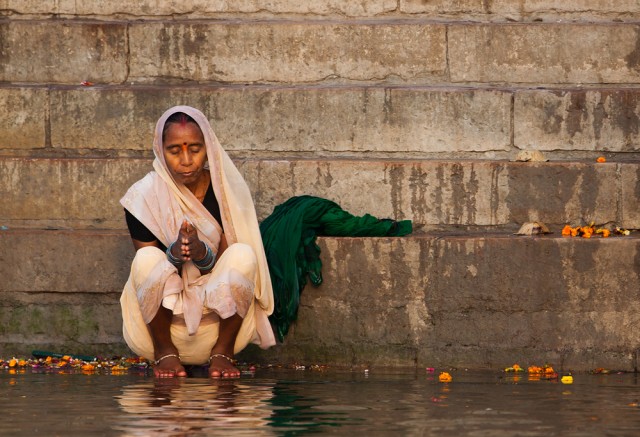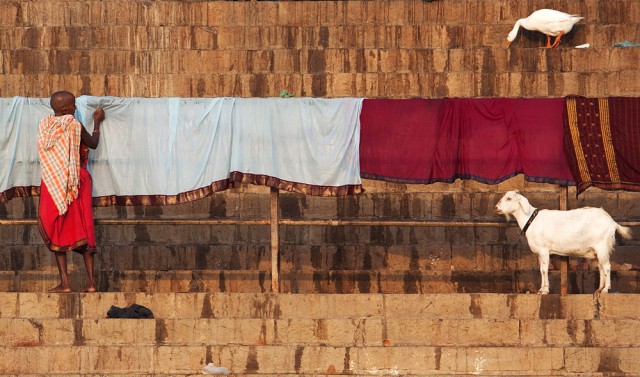Remembering Varanasi
I took a sabbatical in 2006-7 and spent a few months travelling in North and North-East India. Varanasi was one of the places I visited, which was instrumental in changing much of my life. A story I wrote about the ancient city was published by a travel magazine. It was the first piece I was paid for, which prompted me to look at life beyond a desk job. It was the beginning of a series of events that changed the way I lived and worked.
Six years hence, a travel assignment is taking me back to Varanasi in a month’s time–something I am looking forward to. While I await another journey to Varanasi, here is reminiscing a few moments from my previous visit. All the text below is extracted from old posts here on India Travel Blog.
Varanasi has many faces. For some it is a holy city and a must visit place of pilgrimage. For some it is a place to experience India’s cultural diversity. Some come here to learn fine arts and a lot many come in search of making a living.
When I announced that Varanasi is one of the places I am planning to visit, many people had questions to ask. My aunts wanted to know if I am going on a pilgrimage, and my mother snubbed them and responded that I am just travelling (“him? Pilgrimage?”). My sister-in-law asked me what I am planning to leave behind in Varanasi. Traditionally, a pilgrim to Varanasi leaves behind something very dear to him, indicating a recessive attitude to earthly matters.
Varanasi, or Kashi as it was once called, has been a traditional destination of the spiritually inclined and is a must-do pilgrimage for the devout Hindu. My father insisted that I visit the Kashi Vishwanath temple, and called up every day I was there, to make sure I did. I was there on the night of Maha Shivaratri, a festival dedicated to the lord of Kashi. He wanted me to visit the temple on the festival night, but I was deterred by the crowd of thousands who would like to be at the temple on the auspicious night, and preferred to postpone my visit. Pilgrims to Kashi have many things to do beyond the visit to Vishwanatha temple or a traditional holy dip in the Ganges. They make offering to the forefathers in heaven, pray to sun god, perform pooja or just meditate… (See original post – Many perceptions of Varanasi)
Ganga looked calm and still with little flow in this early summer. My boatman Naresh told me that she flows fast and furious in the monsoons and the water level rises much higher. Sadly, the industrial waste flowing in from Kanpur and other cities upstream ensured that the water was dark, polluted and repulsive. My dream of swimming for hours in the deep waters of the Ganga had to remain unfulfilled… (See original post – Boat ride on the Ganges at Varanasi)
In all the days that I was in Varanasi, I never missed morning and evening walks on the ghats. I would start from Assi Ghat where I stayed, and walk up to Dasaswamedh ghat, and sometimes to Manikarnika ghat…
Religion and religious practices are the most dominant experiences on the ghats. No matter what time you are there, you always see someone indulging in a ritual or the other. It could be as simple as a woman going round the peepul tree, a holy dip or a sadhu meditating, or a celebration as complex and elaborate as the Ganga Aarti… (See original post – life on the ghats of Varanasi)


